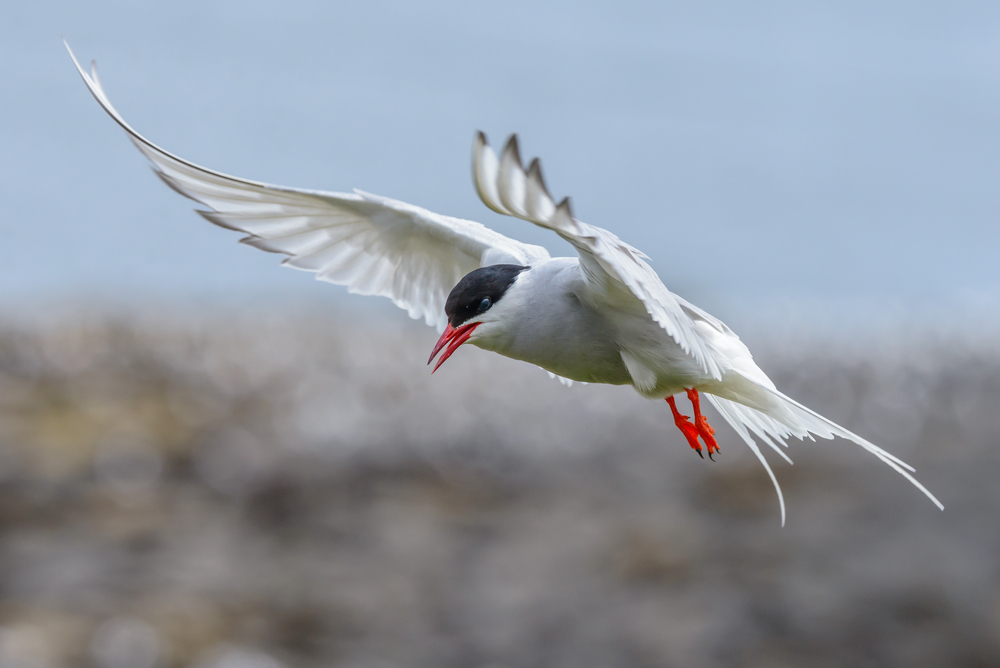
Arctic terns nest in their noisy thousands on the Farne Islands in the UK, and twitchers and scientists have long observed the birds disappearing over the southern horizon at the end of every summer, but until now they didn’t know where they were heading.
The enigma has just been solved thanks to the invention of a tiny transmitter that can be attached to the birds, and the answer is mind blowing. It turns out that terns travel further than any other creature on the planet during their massive migration mission, flying an amazing 96,000km.
From their island base just off the coast of Northumberland in northern England, the terns earn some serious air miles by flapping and soaring all the way down to the frigid waters around Antarctica, via the west coast of Africa and southern Indian Ocean.
The mystery was solved when the BBC Two series Springwatch collaborated with researchers from Newcastle University to tag 28 Arctic terns with tiny transmitters while they were nesting on the Farne Islands. The devices weigh less than a paperclip, yet they can record day length and temperature, and trace where the host bird is going.
Of the 28 mini ‘black boxes’ the team fitted, they have managed to retrieve 15, all rammed full with a valuable payload of information about the host bird’s whereabouts since it bid farewell to the Farnes.
The results surprised even the scientists working on the project, with the birds revealing a serious wanderlust in the most wintry regions of the world, some even going as far west as the Weddell Sea.
‘It’s really quite humbling to see these tiny birds return when you consider the huge distances they’ve had to travel and how they’ve battled to survive,’ says Dr Richard Bevan of Newcastle University’s School of Biology.
‘We have been able to track our record breaking Arctic tern as it flew down the coast of West Africa, crossed into the Indian Ocean and eventually arrived in Antarctica.’
The fit Farne Island tern has taken the record from one of its feathered brethren in the Netherlands. In 2013 a Dutch study showed terns zigzagging back and forth across the South Atlantic, between Africa and South America, on their way home from the Antarctic.
Scientists believe they behave like this because they’re following spiralling weather patterns and trying to avoid flying into the wind—which is quite understandable when your commute is 96,000km.
‘Further analysis of the data from these trackers will allow us to get a better understanding of how the Arctic Terns organise their migration and how global climate change may affect their routes,’ concluded Dr Bevan.
